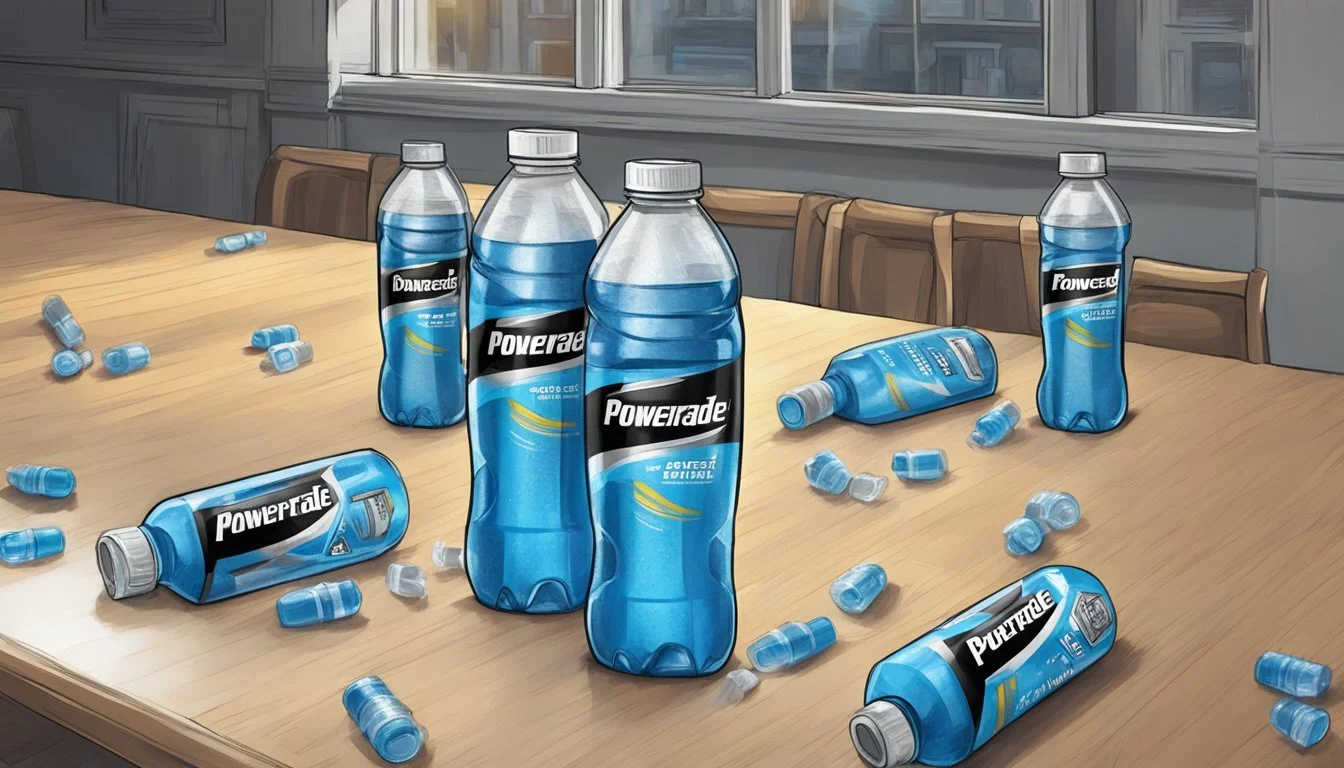How Many Bottles of Powerade Per Day Is Too Much?
Understanding Safe Consumption Limits
When it comes to hydration, particularly for athletes or those engaged in vigorous physical activity, sports drinks like Powerade can offer benefits. They are formulated to replenish electrolytes and contain energy-boosting vitamins, which can be essential to maintain optimal hydration and performance. However, moderating consumption is key, as drinking too many bottles of Powerade can lead to negative health impacts.
The composition of Powerade includes electrolytes such as sodium and potassium, as well as B-vitamins that support energy levels. While the occasional bottle can aid in fluid replacement and help maintain electrolyte balance, excessive intake can contribute to an overconsumption of sugar, calories, and sodium. Each 12-ounce serving of Powerade contains around 19 grams of sugar and 34 grams in a standard bottle, which approaches or exceeds the American Heart Association's daily recommended limits for added sugars if multiple bottles are consumed.
Therefore, while Powerade has its place in supporting hydration for active individuals, it's important to account for one's overall dietary intake and physical activity levels. Drinking one to two liters per day can be appropriate for those engaging in long-duration sports, but for the average person, especially those with a sedentary lifestyle, this amount should be adjusted to avoid the potential health risks associated with consuming too much of this sports drink.
Understanding Sports Drinks
Sports drinks like Powerade are crafted to help replenish fluids and electrolytes lost during intense physical activity. It's important to strike a balance between rehydration and consumption levels to avoid negative health impacts.
Components of Powerade
Powerade typically contains water, carbohydrates in the form of sugar, electrolytes such as sodium, potassium, and magnesium, and often B-vitamins. These components work together to hydrate the body and provide a quick energy source, with electrolytes helping to maintain electrolyte balance.
The Role of Hydration
Hydration is crucial for maintaining bodily functions. During exercise, the body loses fluids through sweat. Sports drinks are designed to replenish hydration levels faster than water alone, as they contain electrolytes that mimic the body's natural electrolyte balance.
Benefits of Electrolytes
Electrolytes, including sodium, potassium, and magnesium, are essential for nerve function and muscle contraction. In Powerade, they help to restore the balance of fluids within the body, which is particularly important during prolonged sports activities to prevent cramping and fatigue.
Sugar Content and Health
While the carbohydrates and sugars in sports drinks provide a quick source of energy, excessive intake can lead to increased calories and an elevated blood sugar level, which may be a concern for individuals monitoring their weight or with diabetes. It's recommended that individuals limit their added sugar intake to moderate levels.
Alternatives to Sports Drinks
As an alternative to sports drinks, water remains the most fundamental hydrating drink. For those looking for additional electrolyte replenishment, natural options such as fruits and vegetables, or water infused with lemon, lime, mint, or cucumber can also provide hydration with fewer calories and sugar.
Daily Consumption Guidelines
In determining the appropriate amount of Powerade to consume, adults should consider several factors including physical activity levels and individual health conditions. It's important to read nutrition labels for proper serving sizes and understand the balance between hydration benefits and potential health risks.
Recommended Intake for Adults
The safe consumption level for Powerade in adults is typically around 1-2 liters per day, depending on factors like age and activity level. A liter correlates with just over four standard 12-ounce bottles. Adults should maintain hydration but also limit their intake to avoid excess sugar and calories.
Analyzing Nutrition Labels
Nutrition labels on Powerade bottles provide crucial information about servings and nutritional value. For instance, a 12-ounce serving contains approximately 19 grams of sugar. Adults should compare this to the recommended maximum daily sugar intake: 36 grams for men and 24 grams for women.
Impact of Physical Activity
Individuals who are physically active or engage in prolonged sweating and workouts may require more electrolytes and fluids, which Powerade can supply. However, during regular daily activities without extensive exercising, plain water is often sufficient for maintaining hydration.
Medical Considerations
Those with medical conditions such as heart disease or high blood pressure should be particularly cautious. Powerade's content, like sodium and sugar, can impact these conditions. It's advisable for these individuals to consult a healthcare professional before increasing their typical sports drink intake.
Health Risks and Side Effects
Excessive consumption of sports drinks like Powerade may lead to several health issues due to the high content of sugar, calories, and sodium. These risks can have both immediate and long-term consequences for one's health.
Potential for Weight Gain
Drinking Powerade can contribute to an increase in calorie intake. With roughly 130 calories per 20-ounce bottle, frequent consumption, especially when sedentary, can lead to obesity.
Blood Sugar and Insulin Resistance
The high sugar content in Powerade, often around 34 grams per bottle, can cause spikes in blood sugar levels. Frequent spikes may lead to insulin resistance, a precursor to diabetes and metabolic syndrome.
Sodium and Blood Pressure Concerns
A single Powerade bottle contains around 250 milligrams of sodium. Exceeding the American Heart Association's recommended limit of 1,500 milligrams daily can raise the risk of high blood pressure.
Dehydration and Imbalances
Despite being a hydration drink, excessive Powerade can cause dehydration and electrolyte imbalances. Symptoms might include nausea, headaches, dizziness, confusion, and fatigue.
Dental Health Issues
Powerade's citric acid content and sugar may lead to tooth enamel erosion, increasing the risk of cavities. The acidity in these beverages is harmful over time, particularly with frequent consumption.





